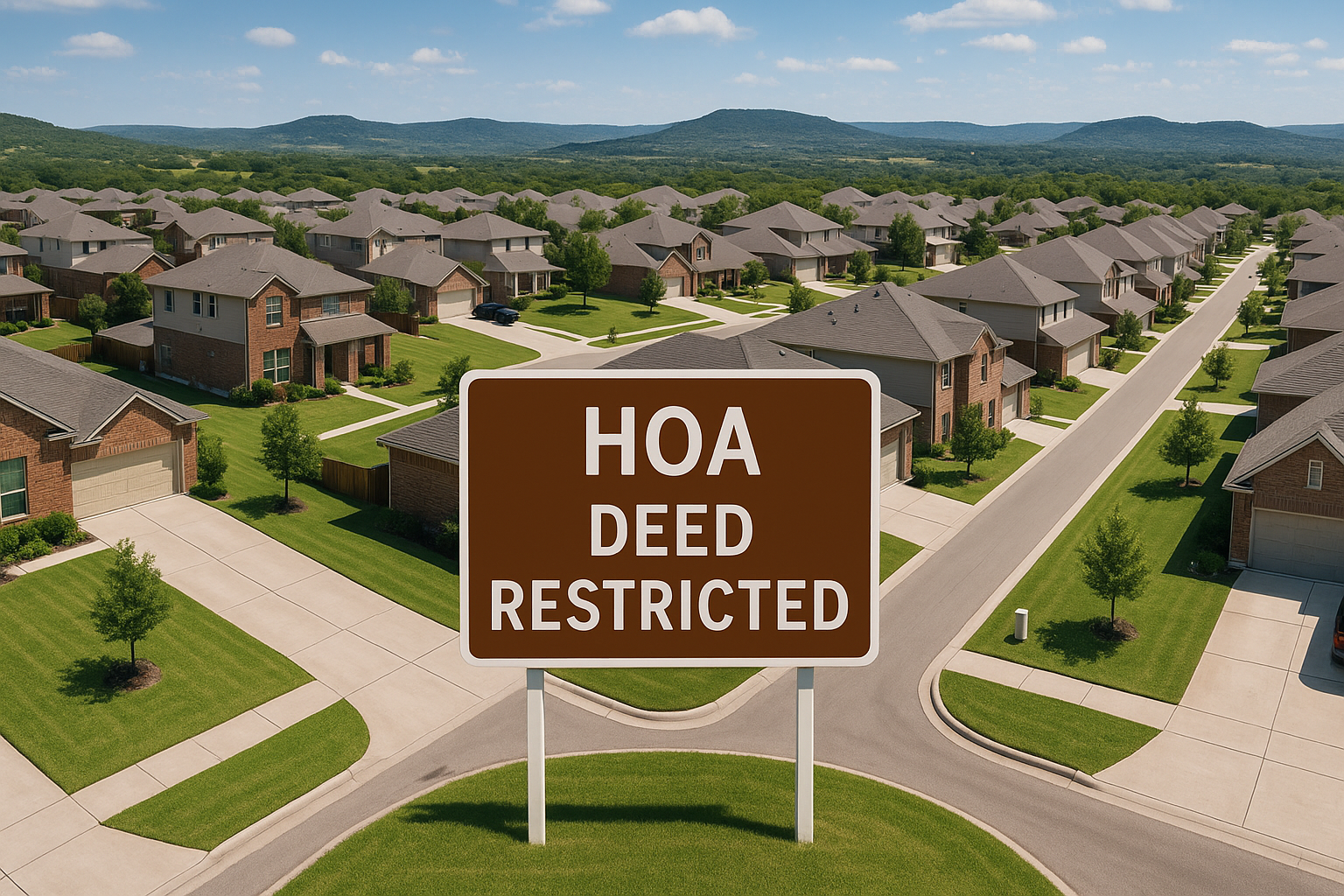Deed Restrictions & HOA Rules: What Texas Lot Buyers Need to Know


Explore deed restrictions in Texas and how they impact custom home builds on your own lot.
Understanding Deed Restrictions, HOA Rules, and Texas Lot Ownership
Texans often dream of finding the perfect parcel of land and building a fully custom home. However, before the blueprints are drawn or the slab is poured, it’s critical to understand the legal framework that could shape—or even limit—what you’re allowed to build. Deed restrictions and Homeowners Association (HOA) rules are two of the most powerful forces affecting lot owners in planned subdivisions, gated communities, and even some rural developments. Ignoring these constraints can lead to costly redesigns, project shutdowns, or even lawsuits, so it pays to be informed from the outset. Deed restrictions—sometimes called restrictive covenants—are rules written into the legal documents recorded with the county. They “run with the land,” meaning they apply to all future owners as well as current residents. These can be as broad as restricting use to single-family homes only, or as detailed as specifying roof types, construction materials, or where driveways may be placed. HOAs, meanwhile, are organizations designed to enforce these (and sometimes add new ones) within neighborhoods. Their boards review plans, approve modifications, and enforce standards with the goal of preserving property values and community aesthetics. More about deed restrictions: What are deed restrictions?.
Common Restrictions: Home Size, Appearance, Fencing, and Use Limits
Deed restrictions and HOA rules in Texas can be surprisingly complex and vary from one community, neighborhood, or rural subdivision to another. Most buyers and custom home builders quickly discover that there's far more at play than simply following a builder's code or city ordinance. Common restrictions include minimum home sizes, maximum heights, required materials, setback distances from the street or neighboring lots, and narrow rules about garages, fences, pools, or even paint colors. HOAs (Homeowners Associations) have the power to enforce these rules, levy fines, or even halt construction—adding a critical legal step before and during the planning of your custom home. Many buyers are surprised to learn that restrictions sometimes state what type of residence you can build (single-story, specific architectural style, etc.), how you landscape, or even whether you may install solar panels and certain outbuildings. Fencing, livestock, visible trailers, and even mailbox designs may all be governed by deed restrictions. Accordingly, an early and thorough review of community documents—often neglected in the excitement of finding a perfect lot—is vital. An experienced custom builder or real estate attorney can provide invaluable support in interpreting documents and ensuring your building plans don't run afoul of local rules. See more details from the Texas Land Title Association: Understanding Texas deed restrictions. Reviewing the recorded deed restrictions, reading through HOA bylaws, and asking direct questions can uncover red flags. Some restrictions are so old that their enforcement is inconsistent or debated in court—if you're set on certain features (a detached RV garage, for instance), address these with your builder and HOA before you close on the lot. Know that rules and enforcement can also change when development phases move forward or new boards are elected. For more HOA guidance, see resources at Texas HOA management laws. Of particular importance—deed restrictions can be amended, but it requires awareness of the proper procedures. Homeowners often must propose the change, lobby neighbors for support, and submit documents for HOA board approval. With legal representation and persistence, success is possible, especially for minor updates or outdated restrictions. Ultimately, the best approach is proactive: whether you're hoping to add innovative features, build a large workshop, or simply keep your options flexible, early research and open communication with both builder and association is the surest way to a smooth project. For resources on amending restrictions, read: Key Texas HOA laws.
How to Request Exemptions, Modifications, or Community Support
If your dream build doesn’t neatly fit within community guidelines, you may seek exceptions or work to modify deed restrictions. Start by understanding the official process, typically outlined in the HOA bylaws or covenants. Most HOAs require formal written requests and documented support from affected neighbors before approving waivers, so anticipate needing to build a case—emphasize consistency with the spirit of the community, precedent for similar exceptions, or updated needs since the restriction’s creation. For example, outdated aesthetic rules may collide with new energy standards or accessibility laws; citing these can strengthen your argument and build support. Community meetings provide a forum for explaining your plans, answering concerns, and learning from neighbors’ previous attempts. If pursuing a major change, consult an attorney familiar with Texas real estate law: the cost is minor compared to construction delays or forced redesigns. Be aware that some HOAs are more flexible when projects match the community’s best interests, such as improving property values or addressing safety. Sometimes, especially in established neighborhoods, the process can take months—plan accordingly in your build schedule.
Get a copy of our free book - Build Your House, Build on Your Lot: https://truestonehomes.com/how-to-build-custom-home-on-your-lot-book
.png?width=400&height=133&name=TRUE%20STONE%20LOGO%20(1).png)